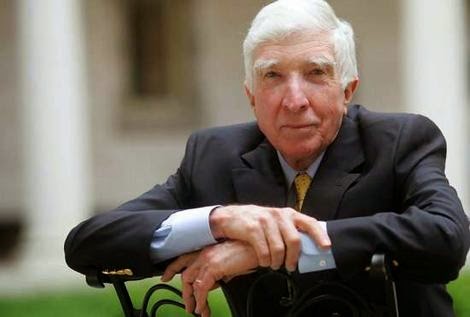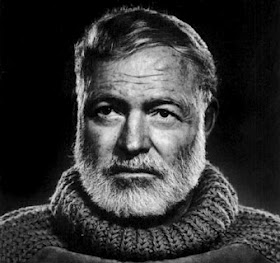Ernest Hemingway "The Snows of Kilimanjaro"
You can find the text of the story here
You can also listen to the story here
Topics for Discussion:
- Read the epigraph again and
discuss the significance of the epigraph for the story. What does the
leopard stand for, what the “Ngaje Ngai”, the house of Gods?
- The relationship Harry and
Helen: How did it start?
What brought them together?
What drives them apart?
What was/is his role in her life and vice versa?
Why does he hate her in the end? - Or does he rather hate himself?
Who or what destroyed Harry's talent? - Who does he blame? - The flashback: a narrative
technique from the genre film. What is its function in this text? Retreat
into the past or escape? - Discuss.
- Hemingway has always been
obsessed with “death” in his writing. So is “Harry” in “The Snows”. What
does Harry say about death? Which symbols of death can you find in this
story? Is “Snows” a story about “death”?
- Have a look at “interior
monologues” in this story. Try to find out how many there are, what they
are about and what their function might be in the narrative structure of
the text.
- What is Harry's attitude and
view of his own life: is he frustrated, bitter, dissatisfied, disappointed
of himself? Did he meet/ live up to his own expectations? Can you find
traces/characteristics of the writer Ernest Hemingway in the writer
“Harry” in the story? So, are there autobiographical elements in the text
and which ones could you find?
- You (certainly) have noticed
the “double ending” of the story. Try to link the ending(s) with the
epigraph at the beginning of the story. What interest/ purpose may
Hemingway have had for the ambiguous ending of the story? Try to pin down
the point in the text where Harry is dying/ is dead. Perhaps there are not
“two” endings but different perspectives of the same event.
- “Harry - a typical Hemingway hero”. In which way
is Harry an “anti-hero” - the
typical Hemingway-style would-like-to-be-macho, the rather ridiculous than
truly “heroic” figure?
- Another typical Hemingway
symbolism is that of the “plain”, where the nagative things happen and the
“mountains”, where the good times/ things are. Find out to which extent
this also applies to the story “The Snows”.
- Is “The Snows of Kilmanjaro” a
short novel or a longish short-story? List arguments which support
your opinion.



Thank you so much for sharing this information. Thank you for taking the time to do this, as a blogger myself. By taking the same information, I have a profile that reports on kohi click tests. So if you want to know something after reading that profile, read by going to the kohi click test .
ReplyDelete